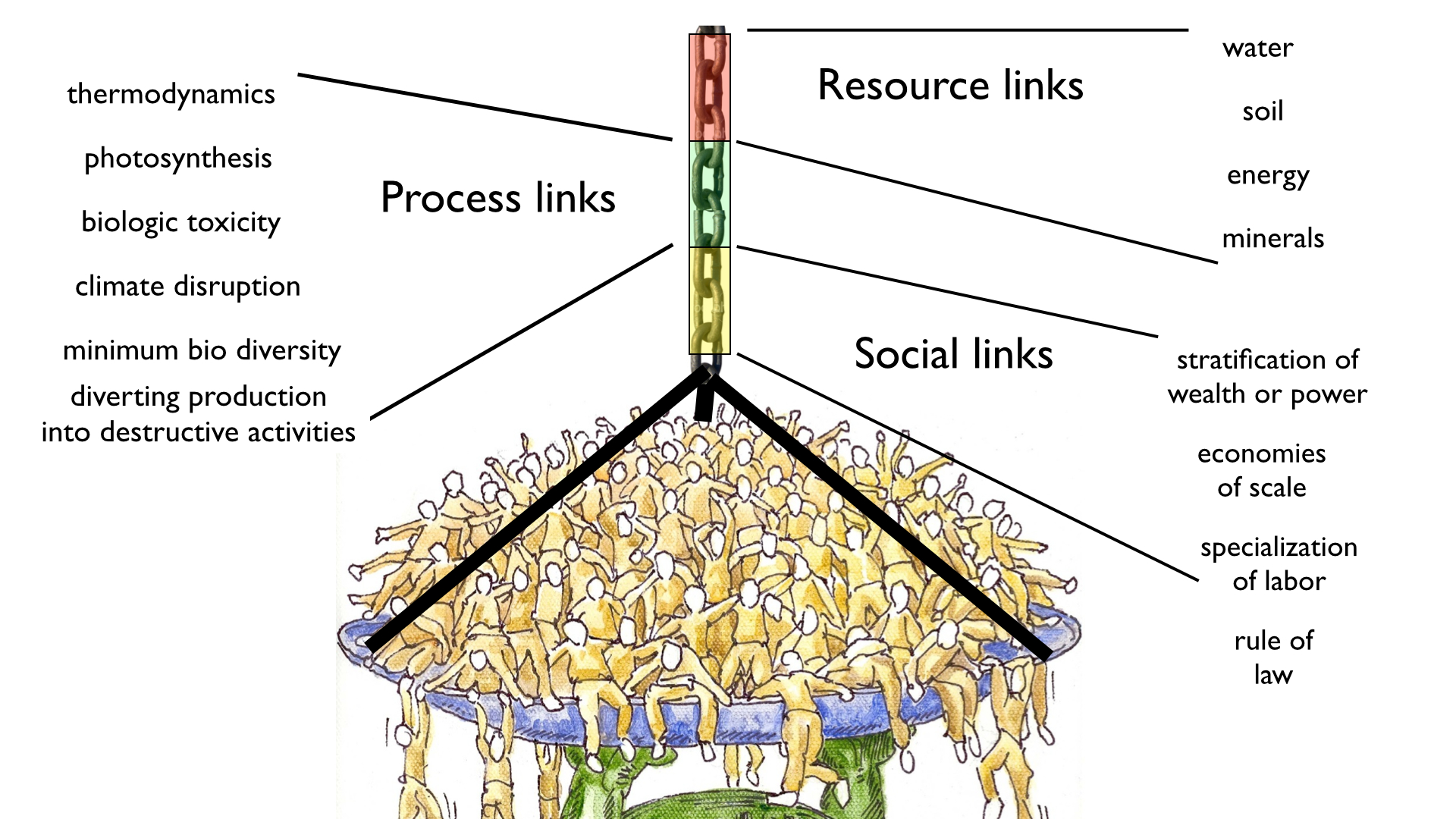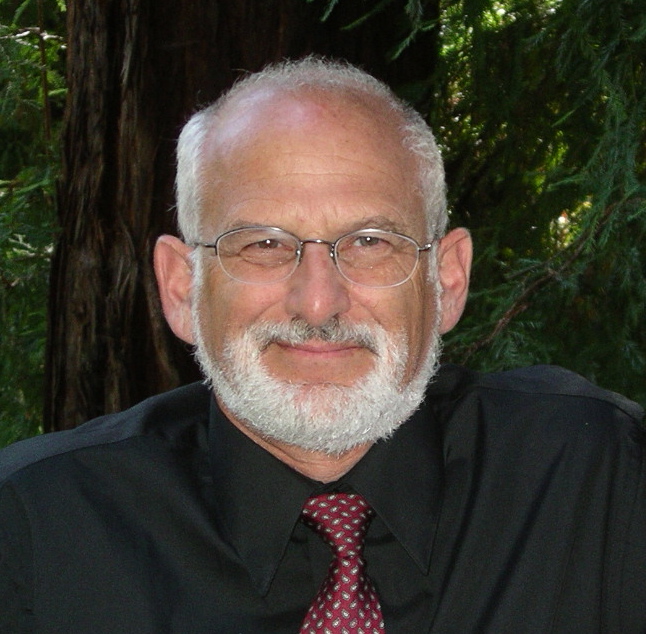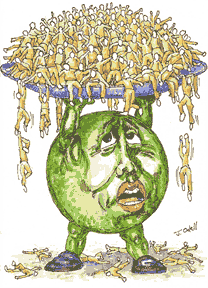Why is —“Ecological Footprint Analysis, an inaccurate and insufficient gauge of overshoot?”, was a question asked by Tim Murray. The short answer is that “overshoot”
danger to the survival of the earth’s community,
or
propensity for, and severity of, collapse
is calculated
instantaneously — by subtracting present sustainable production from level of use. or
longitudinally — by subtracting projected sustainable production from required support.
The calculation can be made only if we can quantify sustainable productions. After quantifying them and consumption/requirements, then an overshoot value takes on its full meaning only after realizing that each difference is a link in a chain that supports civilization. Collapse happens when the weakest link breaks.
Let me describe 5 of these calculations, to which we might put numbers, below:
1) Sustainability is the natural environment's ability to reproduce
the supporting material it has produced in the past. (footprint analysis)
Climate change is a process that may decrease natural production.
So is terra forming (for example, loss of soil productivity through erosion or crop mineral mining.)
2) Sustainability is the distribution among species of this natural production. Are we maintaining the same mix of species or did some species take the supports that were allocated to other species and the latter goes extinct. The World Wildlife Found report is pointing out, without saying so, that 7 billion people require use of supports that were previously allocated to other species and going forward it looks like people will take it all and all other species will not be supported.
3) Sustainable supports to a group are also determined by the distribution of supporting resources between construction and destruction. A community that puts it resources into construction can support a larger group of people at a better level than a community that diverts its resources into destruction of infrastructure and people which must then be replaced. So a group, all other things being equal, that shifts more resource into conflict is actually decreasing support to the living community (it is lowering the sustainability level.) Many would say that is way Rome fell.
4) Sustainable supports to a subgroup are also determined by the distribution of supporting resources among groups of a single species. The rich or powerful can take more resources from one subgroup and leave them unsustainable supports. In this a sub group struggles against nature and collapses and collapses part of nature (2) above. Or struggles against each other triggering ever larger diversion of supporting resources into destruction above collapsing the whole thing (3).
5) Fossil fuels and uranium energy support humans and
these supports are becoming harder to acquire.
These supports are declining and will support a much smaller group this century
(Jack’s latest video
shows:)
Lowering carrying capacity,
increasing overshoot,
increasing conflict,
collapsing civilization, and
despoiling the environment on the way down).
6) Chris Clugston thinks of non renewables, iron copper, through some exotics are one pass supports (destroyed/diluted/not recovered in or from their uses) and that they will not be delivered, in the future, at the levels they have been delivered in the past. Thus lowering the level of the earth’s supports to our community. I think that these non destructible earth elements must be recycled ( hard as that may be) instead of mined from ever lower grade ore. There is already enough copper in the system to support the needs of 50 million people living like you and me (Jack’s earth's sustainable population number) and all we have to do to not experience diminishing supports of copper is to use energy to recycle it. Same for all the other supporting elements. (Chris will correctly point out that the way we use rare earths in electronic fabrication this is a significant challenge)
I think number 4 is the weakest link in the chain that supports the human community. Decreasing energy will be most disruptive first. Followed by 3 - shift support from constructive to destructive activities. However, I am not a biologist and the loss of species mix might be more destructive. I certainly am no climatologist so I don’t know how big or how soon or how much climate disruption will lower supports.



